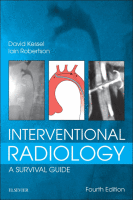Physical Address
304 North Cardinal St.
Dorchester Center, MA 02124

Many interventional procedures have the primary aim of managing narrowings or blockages to restore flow of blood, urine, bile, air or even bowel contents. Once access into the appropriate lumen has been achieved, the basic principles of catheters and wires…

Knowing the equipment is a great start but it comes into its own if you know how to use it. Remember wires go first, and the initial step of most procedures is to establish safe guidewire access to the target…

Angiography is a team sport and a successful angiogram depends on cooperation between the patient and the angiography staff (radiographer, nurse and doctor). A little understanding of the basic principles of angiography can vastly improve the standard of the final…

Vascular access is the starting point for all diagnostic and interventional arterial and venous procedures. Common principles apply regarding choice of access site and equipment but there are significant differences between puncturing arteries and veins. Choice of puncture site is…

Many interventional radiology procedures remain dependent on X-ray guidance. It is important to have good technique in order to minimize the radiation dose to the patient, yourself and the staff. Fluoroscopy Fluoroscopy or screening Real-time imaging is essential for catheter…

A wide range of interventional procedures can only be safely performed with accurate imaging guidance. The aim of this chapter is to outline the basic principles of imaging-directed intervention. Ultrasound, computed tomography and fluoroscopy have complementary roles; individual circumstances dictate…

Purpose Ureteric stents are placed across ureteric strictures to relieve ureteric obstruction and restore anatomical drainage from the renal pelvis to the bladder/ileal conduit. Description All ureteric stent systems are hollow plastic tubes with a double-ended pigtail configuration ( Fig.…

Purpose Drainage catheters allow fluid to be released from collections and structures. You’re Reading a Preview Become a Clinical Tree membership for Full access and enjoy Unlimited articles Become membership If you are a member. Log in here

Essential equipment Embolotherapy is the deliberate blockage of blood vessels; embolization may be lifesaving when used to stop haemorrhage. Embolization is increasingly used as an adjunct to surgery and in the treatment of a variety of benign and malignant tumours.…

Purpose Inferior vena cava (IVC) filters are placed to prevent pulmonary embolism. They are most often used when there is a contraindication to anticoagulation. Despite the name, they are occasionally used in the superior vena cava. Description IVC filters use…